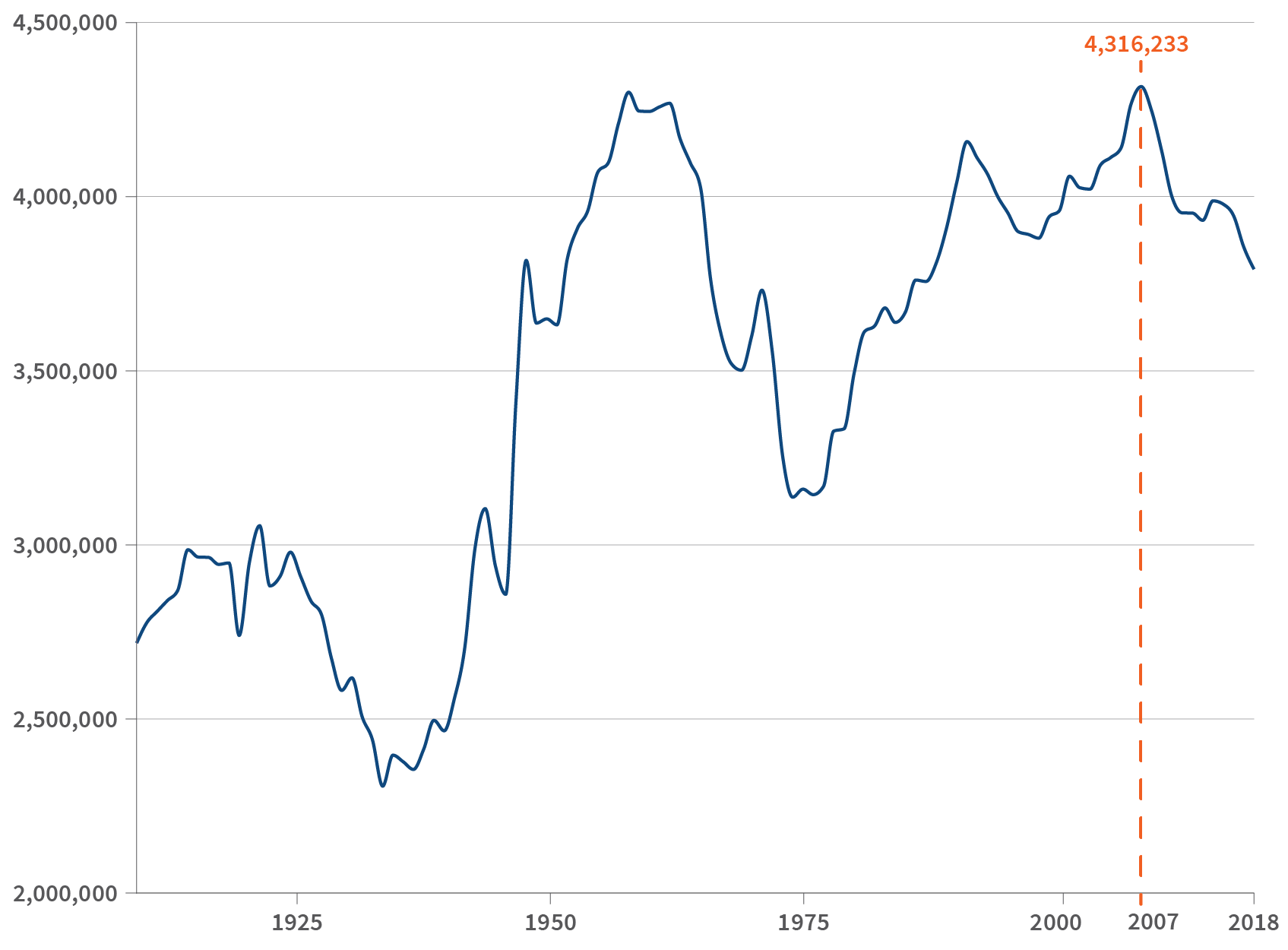Elena Milivojevic
Intern

June 10, 2025

Intern
As the school year comes to an end and Pomp and Circumstance begins to play, all eyes are on the high school graduates of the Class of 2025. Schools across the country will be issuing more diplomas than ever before, as record numbers are set to walk across the stage this year. That’s because this isn’t just another group of caps and gowns; it is the largest, most diverse graduating class in U.S. history. But have we ever stopped to wonder why this class is so big?

Source: NCHS, National Vital Statistics System, birth data; public-use data files
As part of my internship with PRB, I’ve had the chance to explore how demographers break down major population trends. To begin, we have to go back to 2007, when my fellow classmates and I were born. At over 4.3 million, the number of births this year surpassed the 1957 baby boom. Researchers believe this spike is due to various related factors, including historical immigration patterns and the health of the economy, as birth rates tend to be higher when people feel confident about their economic futures.
But then came the 2008 financial crisis and with it the return to a steady decline in birth rates, making the 2007 spike merely a blip on a downward slope. That’s what makes the Class of 2025 so unique, we are part of a demographic peak. This is where demographers come in; they help make sense of these ups and downs. Not only do they help explain what made this graduating class so large, but they can also help us predict what this signals for the future.
The implications of this 2007 baby bump were often overlooked by the public until college application season began this year. However, demographers, such as those at PRB, saw it coming right from the start. That’s because they use population data, like birth, death, and migration rates, to forecast communities’ needs well before reality hits. For example, we saw that this latest bump translated to increased competition for university admissions, but looking ahead, society is predicted to benefit from this large injection of laborers and taxpayers into the workforce, which may also help balance the influx Baby Boomers reaching retirement age. What matters though is where the effects will be felt, how long it will last, and how we adapt. That’s where organizations like PRB come in.
Even though the remarkable birth spike in 2007 didn’t last, the significance will continue to make an impact on our society and how we think about population trends. I know my fellow graduates and I will leave a lasting legacy, one that will become increasingly clear with time.
